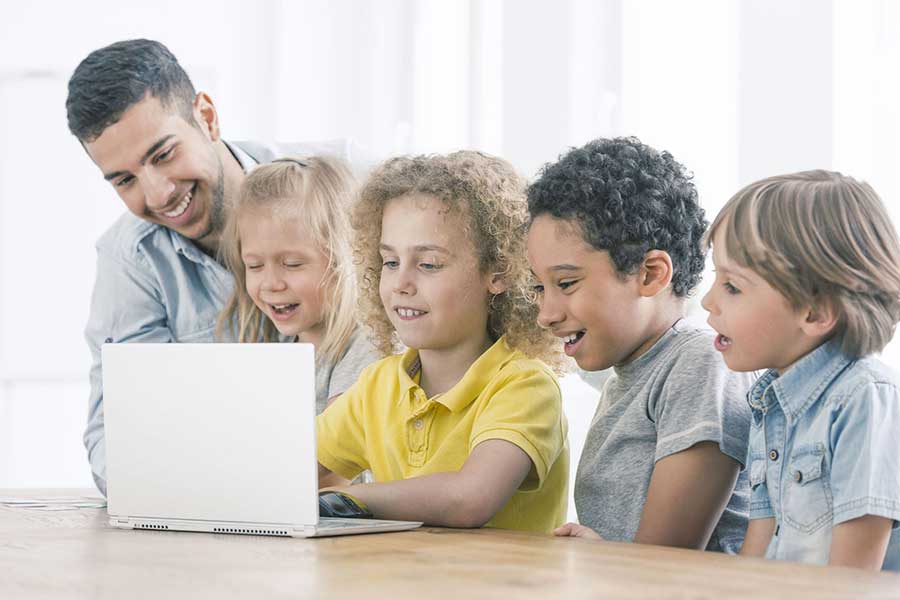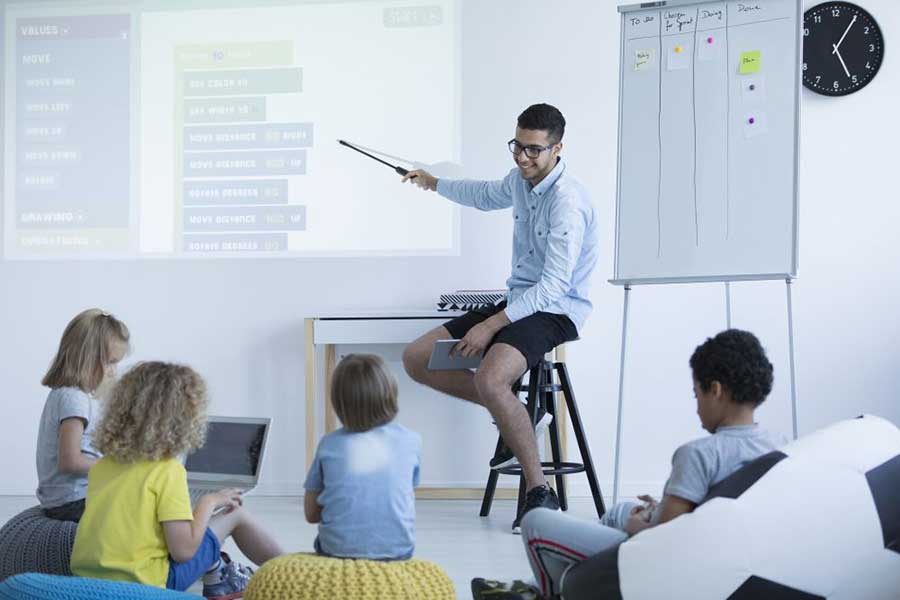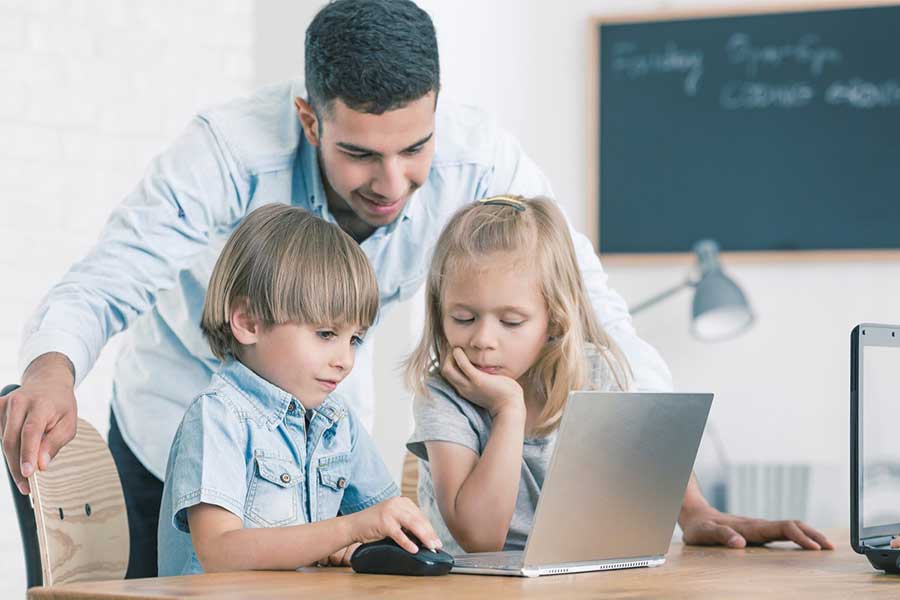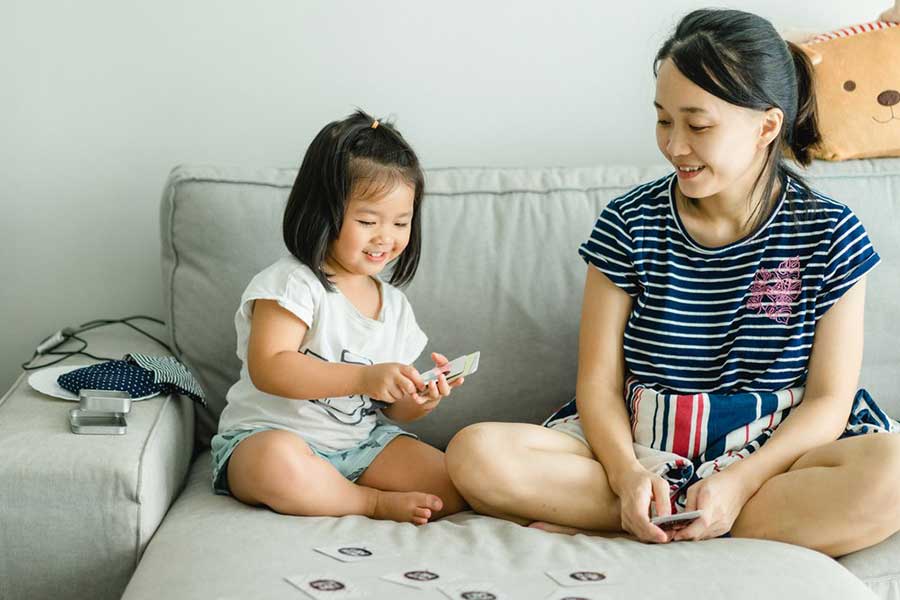Coding for kids: Where to start? (2025)

Where to start coding for kids is a question that might have occurred to you before. We are positive that almost everyone can teach kids to code whether they are writing code for a living, or they haven’t seen a single line of code in their entire lives. In fact, Coding for kids can be taught just like reading, cooking, or any other skill. You only need some basic computer knowledge and a step-by-step guide to find out where to start.

What is coding for kids?
Coding, in general, is a set of actions that are assigned to a computer through a “language” to instruct it to behave as we want. In other words, we use a “script” in a language that the computer understands. Coding for kids (especially the younger ones) is mostly visual in nature. It means that programming languages for kids offer to tile or block-based formats in which children drag and drop “chunks of code” in the shape of blocks. Code blocks should be assembled together like the different pieces of a puzzle to create games or programs. This is called block-based coding. Text-based or “line” coding, which is sometimes considered as “real coding”, refers to an older generation of programming languages. C++, Ruby, Python, Lua, and Java all belong to the latter in which you should type various characters from a syntax or a list of codes.

What age is appropriate to teach coding to kids?
You can start teaching kids as young as 4 to code using programming environments such as Daisy the Dinosaur (available in AppStore), and Bee-Bots (performs on Mac and Windows platforms, iPhones, and iPads). Both offer a limited set of commands appropriate for this age group.
But if you want your little children to engage in a richer programming experience which is fun too, the ScratchJr course can be a better option.

6 ways to learn coding for kids
1- Choose the best programming language/environment
This depends on the age and the level of experience of the children who want to learn to code.
4-year-olds and up with zero coding experience:
ScratchJr, Blockly, and Alice are your best options when you are looking for ways on how to start coding. They all feature a drag-and-drop paradigm that is suitable for preschoolers.
7-year-olds and up with zero coding experience:
Scratch, Minecraft, and Tynker offer deep and fun programming experiences while teaching the concept of coding. You can find a guided Scratch course now.
Text-based “real” coding languages to teach kids with former programming experience:
Python, Ruby, Java, JavaScript, Lua, and C++. You can find more information about each in 10 Best Programming Languages for Kids to learn to code.
2- Choose the best Curriculum (If you want to do it yourself)
Choosing the right curriculum is one of the first things that you should be prepared for as soon as the question of how to start coding for kids crosses your mind. In fact, choosing a curriculum depends on various factors; Are you intending to teach coding to a group of children or just one? Do you want to follow a strict guideline that is created and tested by other educators? Or do you want to go on your own with a more flexible style?
Bear in mind that, when it comes to teaching coding to kids, your curriculum needs to be designed in an intriguing, gamified project-based model. To tell the truth, students should be able to build and create real products like websites, games, apps, and videos since it is what professional programmers do. In other words, you need to define a project for your student, establish short-term benchmarks to track their progress along the way and challenge them in an effective manner to push past their limits.

3- Learn Online
With today’s emphasis on coding for kids, there are a variety of viable online courses available. they offer a high-quality learning experience. Save your child the hassle of attending onsite classrooms and enroll your child in an online course. Learn more about the advantages of online courses compared to traditional face-to-face learning.
4- Enroll your child in a camp
Summer camps are everywhere these days to make finding the solution to where to start coding even easier! The strength point of summer camps is that since the instructor doesn’t have the chance to see the students as regularly as a school teacher. The level of experience/ability among the participants in a camp varies, s/he has to choose a more flexible approach in order to engage children in code learning. It probably ends in a better learning experience. Another benefit of the summer camps is that the children might be more willing to help one another out while they are in a camp, leading to building a community that makes learning to code a more interesting experience for everyone.
5- Use books
You can teach coding to kids with the help of different coding books for kids that are available there. These educational books are a great way to get off a good start either you are looking for an interactive workbook for your children to use with a computer, a book to teach the coding concepts to kids, or a how-to start coding for kids’ guide for your own knowledge.

6- Use Unplugged Activities
It’s not a bad idea to begin the children’s coding journey with some unplugged (computer-free) activities if you intend to teach the younger kids to code. This can also be a great approach when there are not enough computers for everyone (especially for large groups). Also, you are just going through definitions, or you are worried about their screen time.
7- Get your child to attend an onsite coding school in your area or find a tutor/ mentor
If you are not a professional programmer and your child has reached a level of proficiency that you are no more able to help with, then it’s better to invest in a private tutor who is specialized in languages your child is interested in, or look for any onsite coding courses in your area. The advantage of having a mentor is that children can get encouragement, inspiration, and motivation, as well as support and guidance through the way.

Teach coding to kids can be a really fun and rewarding experience. Just try to keep it simple and clear. Please reach out to us if you have any questions about Minecraft and ScratchJr courses. You can also leave a comment if you have any pieces of advice that might help others on this journey.
Editor: Michael Mitryakov | Writer: Negin P
Did you Like this article? Hit the button :)
Array


